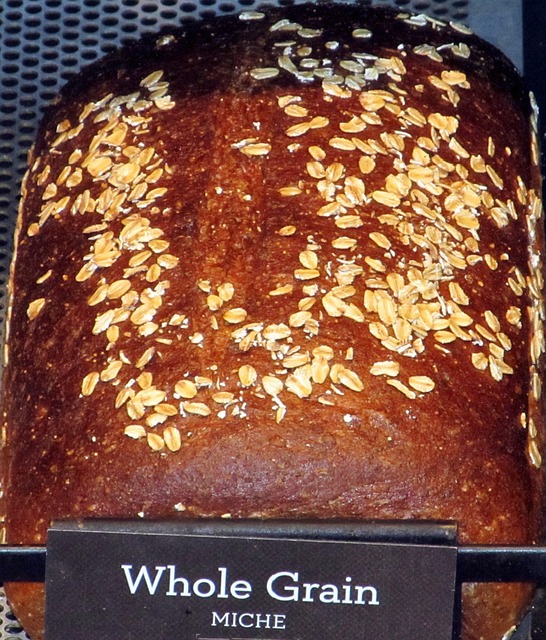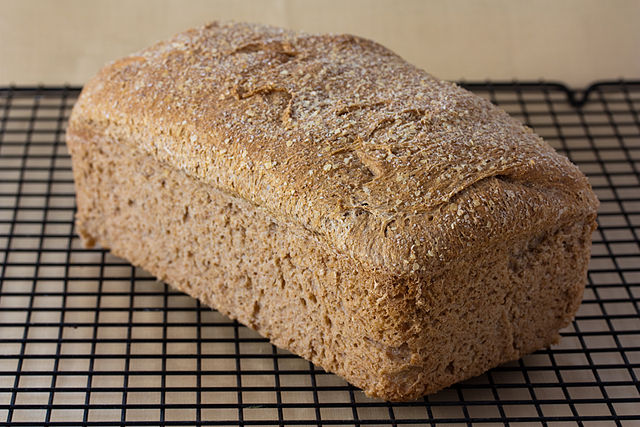Difference Between Whole Wheat and Whole Grain
Table of Contents
Whole Wheat vs Whole Grain
Whole wheat and whole grain, since they look very similar, would be very difficult to identify the difference between them. Yet the major difference between them is in their health enhancing components and the way they are created. Whole grain is created in a way that all the original parts of a grain is still included in the final food that you create. Whole wheat, however, loses some parts of the original seed when it is processed. As a result, whole wheat also loses some of the nutrients. Let us find out more about the difference between whole wheat and whole grain.
What is Whole Grain?
The whole grain contains all elements of a kernel, which are the bran (outer shell), germ (embryo) and endosperm (inner part, core). The bran and germ contain a variety of nutritional components such as dietary fiber, B vitamins, Vitamin E, trace of minerals, antioxidants and small amounts of unsaturated fat. So, the nutrients are intact in whole grain as it is not subjected to the refining process.
The whole grain is also considered tastier than whole wheat, and this is possibly due to the fact that it is not subjected to the refining process. In other words, whole grain is said to have more flavor than whole wheat. It is true that grain is characterized by the texture. Whole grain is of dense texture. This is why whole grain is a repository of nutrients and minerals.
The whole grain is, of course, easily absorbed by the body. It is easily digestible too due to the greater amount of dietary fiber in it. It is said that the dietary fiber in whole grain is four times more than that found in refined grains. The whole grain is highly recommended for diabetic and heart patients. It is because of the fact that the carbohydrates from the whole grains get digested and enter the bloodstream more slowly.
Whole grain is not characterized by the quality of long shelf life. The fat content in whole grain is low when compared to the fat content in whole wheat. Whole grain is characterized by the presence of more oil than whole wheat. This is possibly the reason why whole grain is costlier than whole wheat.

What is Whole Wheat?
As whole wheat is a refined product of whole grain, it primarily contains endosperm. During the refinement process, it loses the bran and germ. It is important to note that the nutrients get lost during the refining process of obtaining the whole wheat.
When it comes to the texture, whole wheat is of lighter texture. When it comes to the process of digesting, unlike whole grain, the whole wheat is not easily absorbed by the body.
One of the greatest advantages of having whole wheat on your kitchen shelf is that it has a long shelf life.

What is the difference between Whole Wheat and Whole Grain?
Definitions of Whole Wheat and Whole Grain:
Whole Grain: Whole grain contains all the three elements of a kernel; namely, the bran, germ, and endosperm.
Whole Wheat: Whole wheat is a refined product that has only the endosperm but not germ and the bran.
Characteristics of Whole Wheat and Whole Grain:
Texture:
Whole Grain: Whole grain is of dense texture.
Whole Wheat: Whole wheat is of lighter texture.
Shelf Life:
Whole Grain: Whole grain does not have a long shelf life.
Whole Wheat: Whole wheat has a long shelf life.
Nutrients:
Calories:
Whole Grain: A piece of whole grain bread1 contains 100 calories.
Whole Wheat: A piece of whole wheat bread2 contains 67 calories.
Fat:
Whole Grain: A piece of whole grain bread contains 2 g of fat.
Whole Wheat: A piece of whole wheat bread contains 1.07 g of fat.
Carbohydrates:
Whole Grain: A piece of whole grain bread contains 19 g carbohydrates.
Whole Wheat: A piece of whole wheat bread contains 12. 26 g carbohydrates.
Protein:
Whole Grain: A piece of whole grain bread contains 5 g protein.
Whole Wheat: A piece of whole wheat bread contains 2.37 g protein.
Dietary Fibers:
Whole Grain: A piece of whole grain bread contains 5 g dietary fibers.
Whole Wheat: A piece of whole wheat bread contains 1.1 g dietary fibers.
Vitamin C:
Whole Grain: A piece of whole grain bread contains 10% vitamin C.
Whole Wheat: A piece of whole wheat bread contains 0 % vitamin C.
Calcium:
Whole Grain: A piece of whole grain bread contains 2 % calcium.
Whole Wheat: A piece of whole wheat bread contains 3 % calcium.
Iron:
Whole Grain: A piece of whole grain bread contains 6 % iron.
Whole Wheat: A piece of whole wheat bread contains 5 % iron.
References:
Images Courtesy:
ncG1vNJzZmivp6x7pbXFn5yrnZ6YsqOx07CcnqZemLyue8OinZ%2Bdopq7pLGMm5ytr5Wau27Dx6ijnmWnnbKiwIyapZ1lp528rbGMoKmaoZ5k